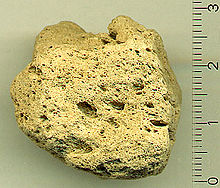Igneous rocks show a
wide variation in mineral composition and texture due to conditions of crystallization.
The most useful classification is based on mineralogy and texture.
Relative silica content
– presence of quartz indicates excess of silica and felspathoids indicate
deficiency of it.


